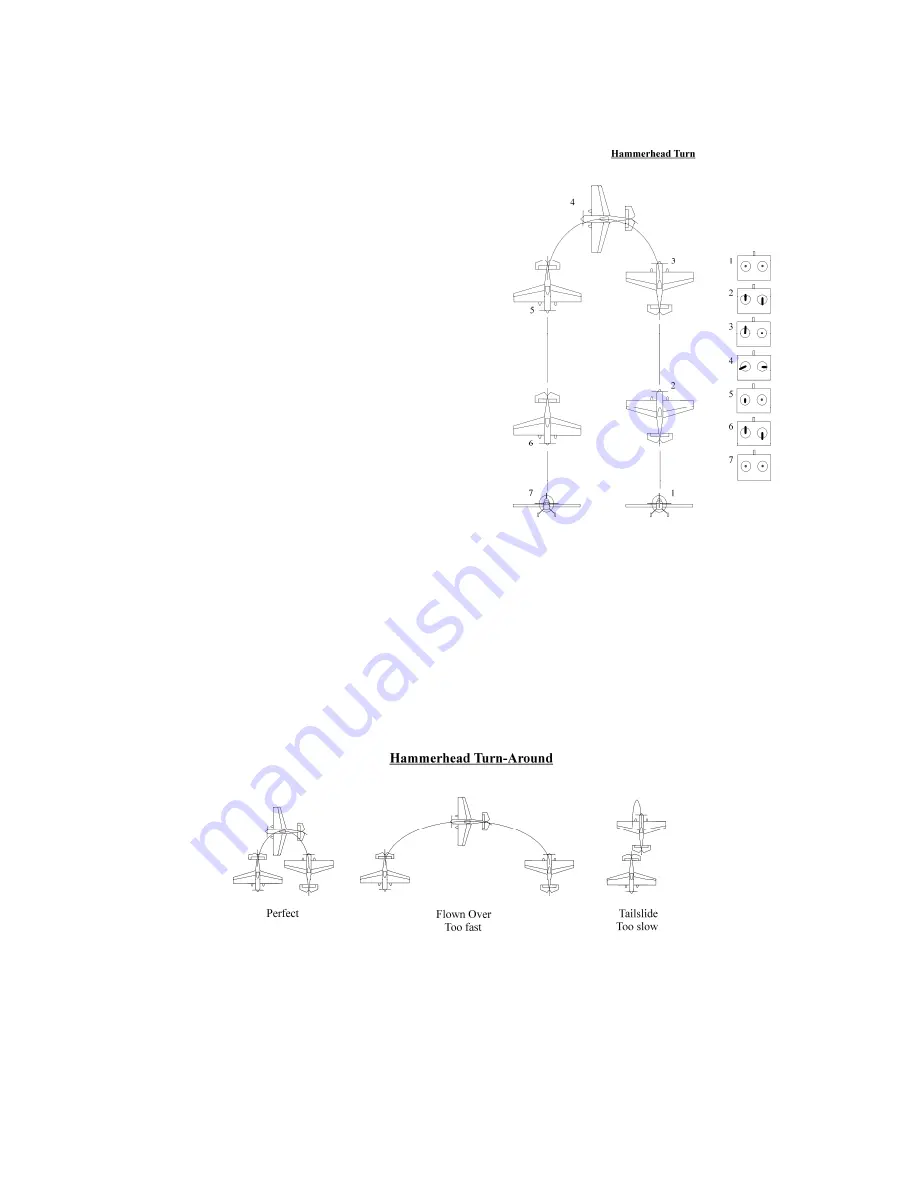
© 2007 Stevens AeroModel.
Page 32 of 33
The Hammerhead Turn
Begin the hammer head turn from a level line with enough throttle to
draw a long vertical upline – but not so much that the model climbs
so high that it is hard to see. Execute a 1/4 loop up to a vertical line.
Establish and correct for a good vertical line. You will probably need
to add right rudder during the pull up to maintain good yaw balance
on the upline. As the model decelerates, add right aileron to counter
torque’s tendency to roll the model to the left. This will increase as
the model slows. Adjust the throttle to maintain a slow deceleration,
up to and including reducing the throttle enough to “stop” at the point
that you want. Do not close the throttle at the top of the maneuver,
as we need thrust over the rudder to intitiate the turn-around. A
good technique is to reduce the throttle to a point that allows a slow
deceleration and stop point, and maintain that throttle setting
through the entire turn-around.
At the precise moment that the model stops vertical motion, add full
left rudder, and increase the right aileron to maintain a true vertical
track (no wing torque) during the turn-around. The model should
pivot within one wingspan diameter, to a nose down position. During
your first few hammerhead turns, you will need to adjust the amount
of rudder, and aileron needed to rotate the model to the vertical
downline. For most of my models, I end up using full left rudder and
½ right aileron. If you use too little aileron, the model will torque at
the top of the hammerhead. Torquing is the tendency of the model,
at very slow airspeeds, to roll to the left in responseto the effects of
torque.
The point at which you add rudder for the turn-around portion of the maneuver is also something that will take time and
experience to perfect. Some models don’t have enough rudder authority to rotate the nose rapidly enough at zero forward
(vertical) motion, so the turn-around will have to occur earlier. The point at which you initiate the turn-around is often
referred to as the “kick point” (in full scale aerobatics the rudder is on the foot controls, thus the “kick” of rudder for the
turn-around).
If the “kick point” is early, the model will fly over the top of the hammer (rather than a tight pirouette), and the radius of the
turn-around will be too large. If the “kick point” is late, the model may actually descend backwards (tailslide). A perfect
“kick” will make the model rotate within one wingspan radius to a vertical nose-down position. Adjust the airspeed at the
“kick point” to perfect the turn-around.
Once the model transitions to the vertical down position, your work is not done. Make sure that you actually establish the
vertical downline. Depending upon the quality of the turn-around, you will have to correct in pitch, roll, and yaw to re-
establish the vertical. Finish the maneuver with a normal ¼ loop to a level line.
Here’s to blue skies, calm winds, round loops, and soft touchdowns
Good luck with your new model!!
www.rcpilotguide.com
Содержание SHAFT S400
Страница 4: ...2007 Stevens AeroModel Page 4 of 33 Laser Cut Parts Inventory...
Страница 5: ...2007 Stevens AeroModel Page 5 of 33 Laser Cut Parts Inventory...
Страница 25: ...2007 Stevens AeroModel Page 25 of 33 THIS PAGE HAS BEEN PROVIDED TO SCHEME A COLOR SCHEME...
Страница 26: ...2007 Stevens AeroModel Page 26 of 33...
















